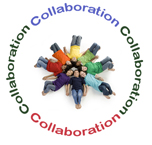
Connections for Students
Supporting Children and Youth with
Autism Spectrum Disorders (ASD)
Supporting Children and Youth with
Autism Spectrum Disorders (ASD)

 |
Connections for Students Supporting Children and Youth with Autism Spectrum Disorders (ASD) |
 |
|
Connections for Students is centred on multidisciplinary, student-specific and school based transition teams that are established approximately six months before a child prepares to leave intensive behavioural intervention (IBI) services delivered through the Ministry of Children and Youth Services (MCYS) Autism Intervention Program (AIP) and starts or continues in publicly funded school. The transition team continues to support the student for at least six months after leaving the AIP and entering or continuing in school. -- |
||||||||||||||
Transition teams will include: |
|||||||||||||||
|
|||||||||||||||
| Teams may be supplemented by other multidisciplinary expertise based on the child’s needs such as: | |||||||||||||||
|
|||||||||||||||
| Transition teams will draw on the applied behaviour analysis (ABA) and ASD expertise of both the board level staff and ASD Consultants in the School Support Program in the planning delivery of ABA instructional methods. | |||||||||||||||
| By March 2010, Connections for Students transition teams must be made available in all 72 publicly funded school boards for children who are ready to leave IBI services delivered through either the Direct Service Option (DSO) or the Direct Funding Option (DFO) provided by the AIP and who are starting or continuing in the publicly funded school system. --- |
|||||||||||||||
Connections for Students Model Resources 16 boards/AIP providers have already participated in Connections for Students and have developed resources and practices that are available for use to coincide with the introduction of Connections for Students in your school board. Click on the link below to view available tools, templates and resources* |
|||||||||||||||
-- * The resources made available are for use as examples of tools and templates that have been found useful by boards and AIPs that have implemented the Connections for Students model. The intent of the tool and template examples is to assist in the development of resources. Boards and AIPs that have developed such resources to meet their own local circumstances, and as such, these resources may not reflect the realities of all projects. Return to CODE Home Page |
|||||||||||||||
 |